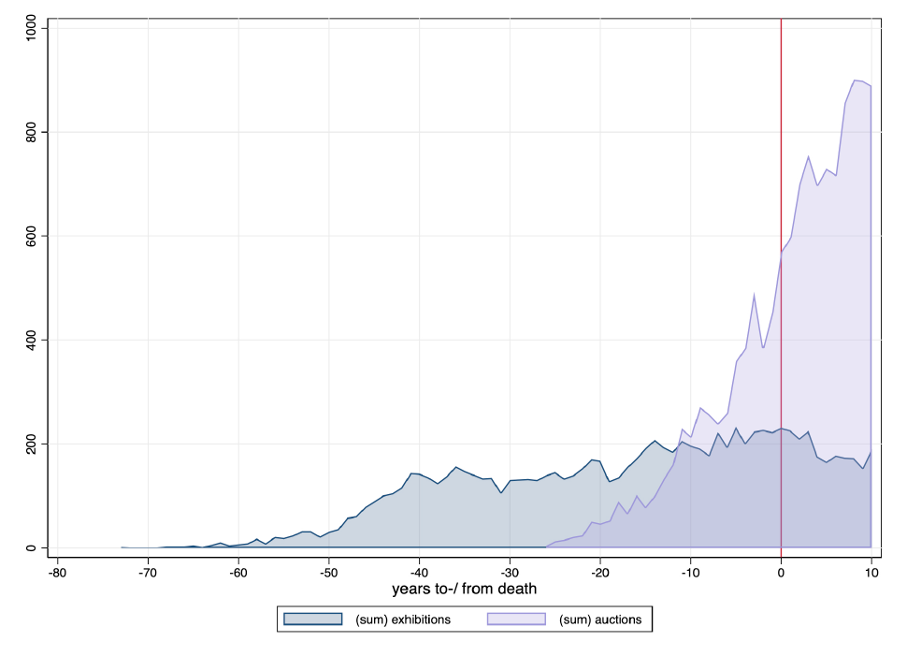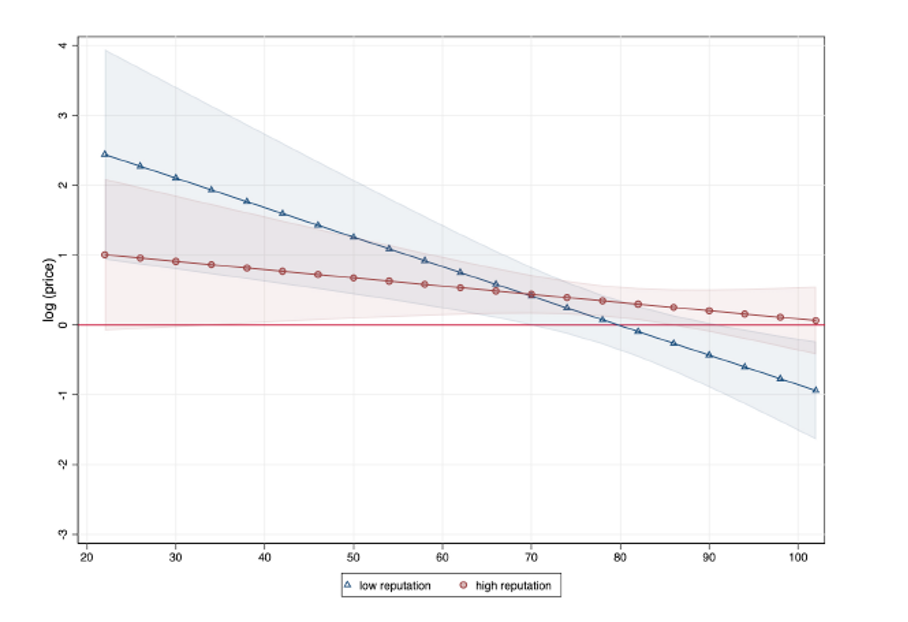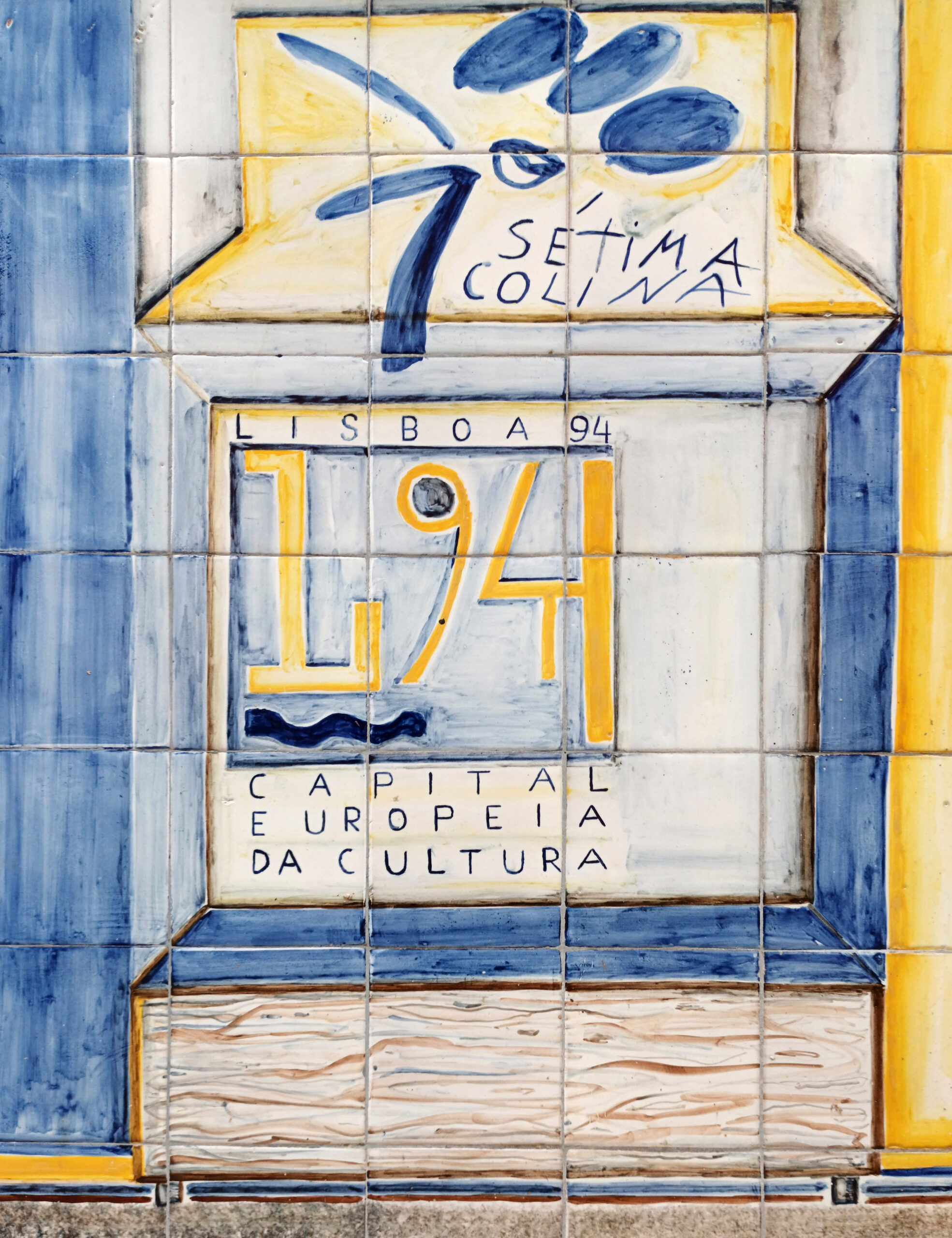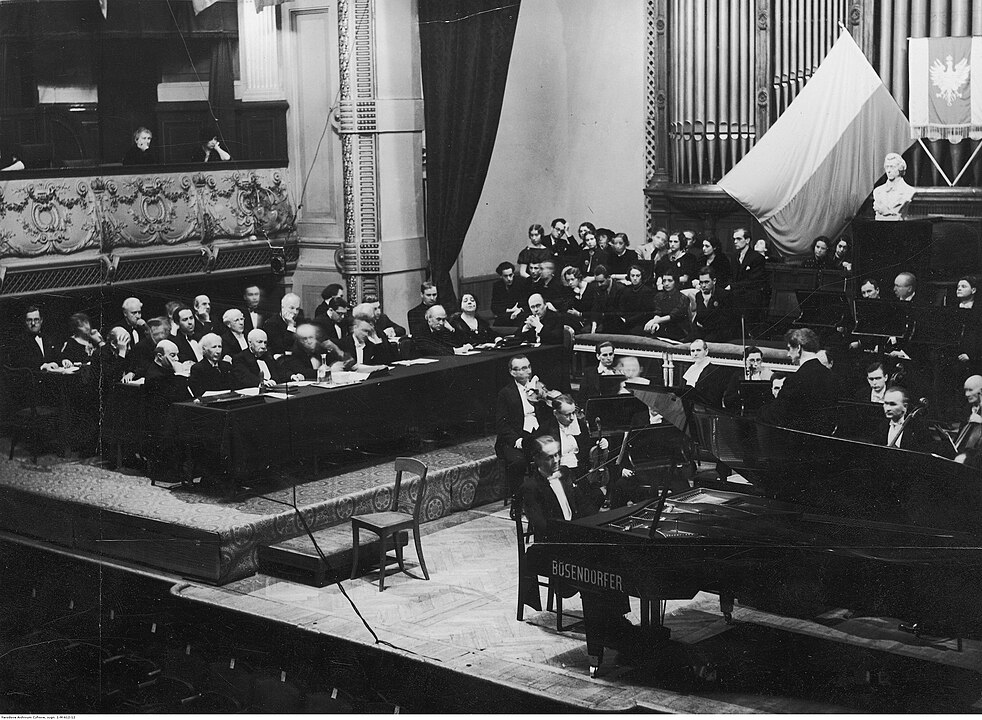This blog discusses postmortem art market effects. Based on a sample of 22 thousand exhibitions and 30 thousand auction transactions, the study finds a negative, short-term effect on the number of exhibitions, and a significant positive price premium postmortem. The study discusses important economic mechanisms, such as media coverage, age and reputation at death, as well as managerial and policy implications for art preservation and value beyond death.
In 2023, the Rijksmuseum in the Netherlands curated an exhibition of paintings by the Dutch artist Johannes Vermeer, successfully pre-selling 450’000 tickets. Although the artist died almost 350 years ago, this highlights the substantial postmortem value of his artworks. Besides a large body of work on auction prices and death (e.g., Etro and Stepanova, 2021), there is little empirical evidence on further market effects and interdependencies. The recent study by Cuntz and Sahli (2023) fills this gap and investigates for immediate postmortem effects in both, exhibition and auction markets. Understanding these effects can have significant policy relevance for postmortem granted rights, such as copyrights, and has managerial implications as legacy stewardship rules and estate management influence postmortem market outcomes.
The underlying study draws on a random sample of 1000 (popular) artists, collects more than 22 thousand exhibitions worldwide, and combines them with records on more than 30 thousand of auctions. The distribution is shown in Fig. 1. The econometric results suggest, compared to living artists, deceased artists see fewer exhibitions on average, and their artworks are less well preserved and represented after death. This negative and causal effect is temporary, however. Specifically, the study finds a steady increase in exhibitions over the years before death and a sharp, but short-lived decline after death. Next, auction transactions for the same group of artists demonstrates a positive and robust postmortem price premium. We summarize in the following the related literature, main mechanisms and economic implications.
Figure 1: Distribution of Auctions and Exhibitions at Death

Note: This figure plots the descriptive statistics for the total number of exhibitions and auctions based for years to-/ from the death of artists. We only plot exhibitions of the 261 artists with observed auctions and death year < 2013.
Related Literature
The empirical literature on postmortem effects has focused on creativity (Graddy and Lieberman, 2018), prices in auction markets (De Silva et al., 2022; Ursprung and Wiermann, 2011; Ursprung and Zigova 2021; Pénasse et al., 2021, Mei et al. 2022), as well as the effects of provenance information on general auction trade (Li et al., 2022). Moreover, we contribute to the literature on creativity and age (Galenson and Lenzu, 2016; Galenson, 2009, 2006; Graddy and Lieberman, 2018) showing that age at death is an important factor for postmortem commercialization and distribution of artworks.
On Supply Scarcity, Exhibition Costs and Media Coverage
The first interesting point of view is the so-called “scarcity effect.” When an artist passes away, they can no longer produce new work, obviously. This limited supply often leads to an increase in the price of existing artworks, a finding confirmed by this study. Hence, increases in prices also drive-up exhibition costs, such as insurance costs, which could negatively affect exhibitions postmortem. Arguably, promotional effects and higher media coverage could positively affect exhibitions right after the death. We anecdotally explore the mechanism and investigate google search traffic around death for a subsample of artist, showing that the relative search volumes increase after the death. However, higher traffic is limited to 2-3 months before and after death. Additional explorations indicate that mentions of artists in books and other publications tend to decline after death. So, seemingly, promotional activities have little explanatory power for the postmortem effects we observe.
Age and Reputation at Death
Another key finding is the role that an artist’s age and reputation plays at the time of their death. For younger artists who pass away unexpectedly, we observe even an increase in postmortem exhibitions, as well higher price premium at auctions. This is probably because their untimely death acts as a “shock” to the art market, drawing more attention to their work. This results is reflected in Fig. 2, which plots the average postmortem auction prices for different levels of age and reputation at death. The empirical evidence points to the fact that the postmortem auction price premium is driven by younger dying artists. Interestingly, this holds true for both higher and lower-reputation artists in the sample. Reputation at death is approximated as a function of exhibiting in more (or less) reputable venues in the past (more details in the technical study).
Figure 2: Auction Prices Postmortem at different levels of age and reputation at death

Note: This figure shows the average marginal effects for the overall death effects for different levels of ’age at death’, divided in two samples of artists, high and low reputation at death. The dependent variable is (log) price of auctions.
A Complex Interplay of Markets
Notably, exhibitors could make strategic use of the “scarcity” signal to attract more visitors and increase their profile and profits in differentiated product markets. Indeed, for the majority of old and more mature artists in our sample, death is expected and has little to no informational value in markets (Ursprung and Zigova 2021). Moreover, the study also explores how auction prices and exhibitions are intertwined. The prestige associated with an artwork being displayed in a well-known gallery or museum often could lead to higher auction prices later on. However, when fewer exhibitions are staged postmortem, this signaling mechanism is weakened, potentially affecting the auction prices in turn.
What Can We Learn?
The decrease of exhibitions postmortem, as we argue, is best explained by the economic concept of transaction costs, after ruling out most alternative explanations. The main findings point towards substantial transaction costs that accrue in the art markets right after death. Anecdotal evidence suggests that lengthy and complex re-negotiations (or dispute) over property or granted rights can occur between artist heirs or foundations and future exhibitors or sellers of artworks. Postmortem estate management and public policies, such as copyright protection and publicity rights granted beyond the creator’s lifetime, estate tax treatment or other legacy stewardship rules, can hence increase applicable costs in postmortem transactions. Therefore, the smart design of these polices, as well as the development of international standards, could potentially increase economic welfare and improve postmortem preservation of art.
* The views expressed are those of the authors, and do not reflect the views of the World Intellectual Property Organization or its member states.
About this post
Cuntz, A and M Sahli (2023), “Ars Longa, vita brevis: The death of the creator and the impact on exhibitions and auction markets”, WIPO Economic Research Working Paper No. 76, Geneva: World Intellectual Property Organization. https://doi.org/10.34667/tind.48525
About the authors
Alexander Cuntz, World Intellectual Property Organization (WIPO)
Matthias Sahli, World Intellectual Property Organization (WIPO) & University of Neuchâtel






